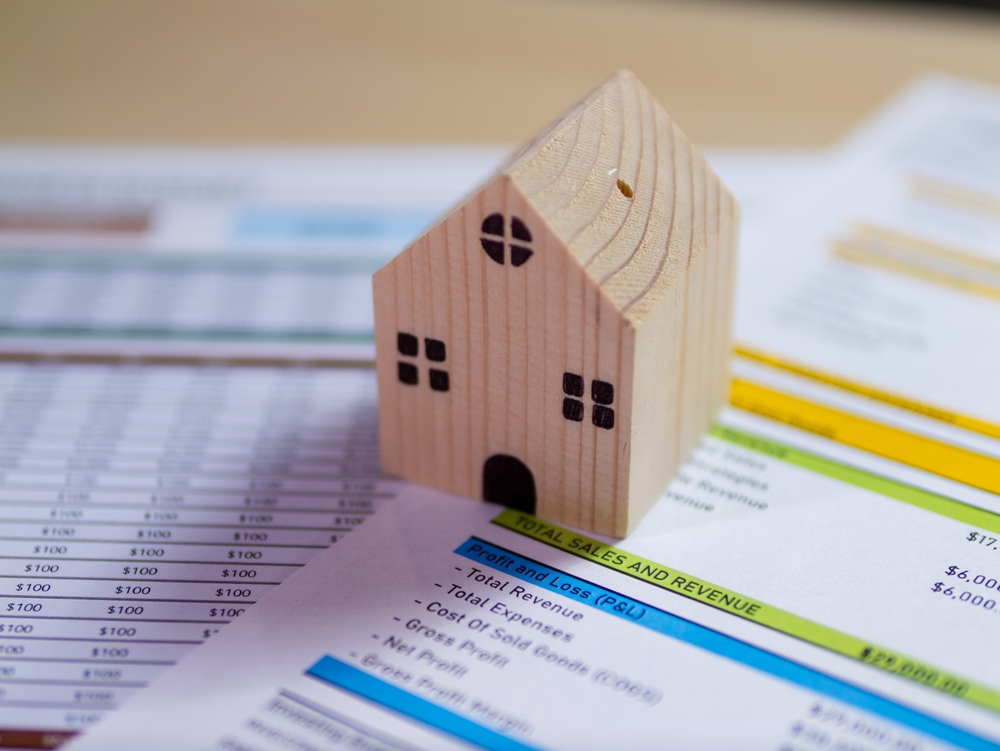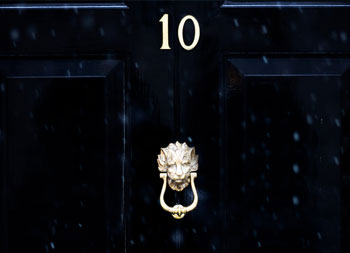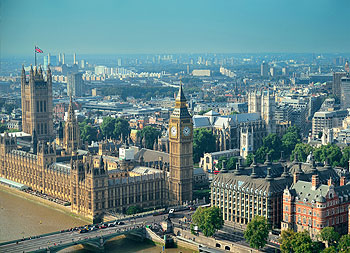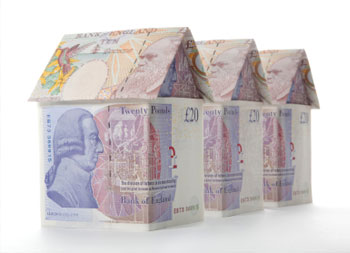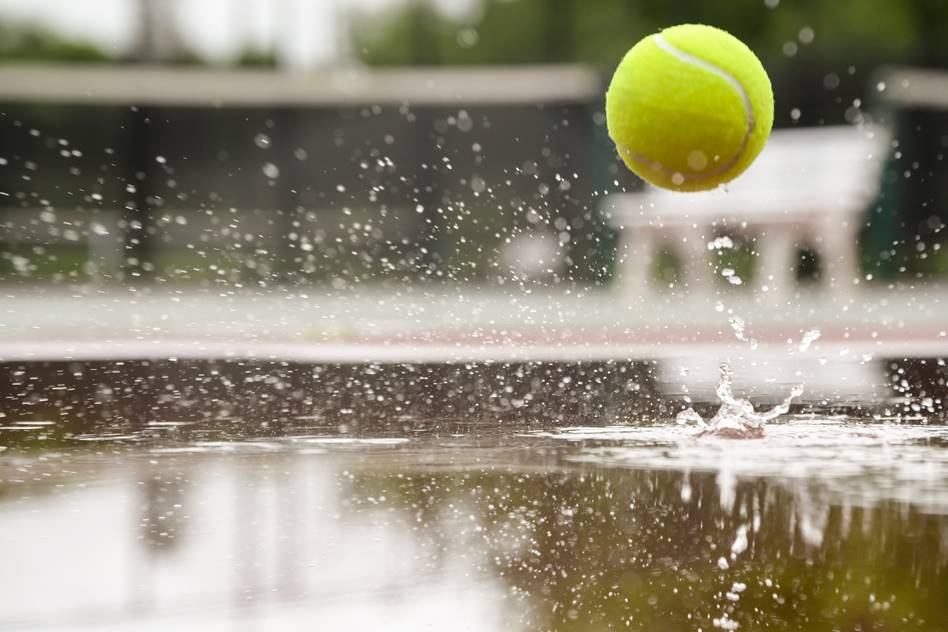End of year market report
End of year market report
As 2024 draws to a close, it is a very mixed picture, the sales market, though, remains resilient
and some of the data is showing signs of real growth.
Zoopla is reporting that, despite affordability pressures, house prices rose by1.0% over the last 12
months. They also report the supply of properties for sale is continuing to improve, with buyer choice
now at its highest level since 2014. However, the portal warns that the increase in supply means that
the market is becoming more price sensitive and so sellers need to adjust their expectations to secure
deals.
Nationwide’s figures, on the other hand, show house prices grew by as much as 1.2% last month
alone - their fastest rate for November for two years. Annually, they were up by 3.7% and mortgage
approvals are approaching pre-pandemic levels, suggesting underlying market strength. Halifax’s
prices were up by a very similar 1.3% and 4.8% year-on-year.
Rightmove’s figures, in contrast, show a monthly fall of 1.2% and relatively sluggish annual growth of
1.2%. There are also some marked variations across the country, with northern regions generally
outperforming the southern ones in terms of both activity and price growth. The North East had the
highest annual rise at 4.2% and London came bottom at -0.8%. However, the differences between the
boroughs in the Capital are even greater than they are for the regions, with over a 10% swing
between top and bottom. Merton’s prices, for example, have risen by 7.2% over the last twelve
months, whereas Richmond’s have fallen by 3.1%.
What all the indices do agree on is that it’s first-time buyers that are currently some of the most active
as they rush to beat the change in stamp duty, whose threshold will come down from £425,000 to
£300,000 on April 1st next year.
This month’s mixed data is not unexpected in a market that is coming back to life after an election, a
gloomy budget and still adjusting to higher mortgage costs.
HOUSE PRICES AND STATISTICS
November’s indices are very mixed but should settle into a more discernible pattern in the New Year.
Nationwide: Nov: Avge. price £268,144. Monthly change +1.2%. Annual change +3.7%
Halifax: Nov: Avge. price £298,083. Monthly change +1.3%. Annual change +4.8%
Land Registry: Sept: Avge. price £291,828. Monthly change -0.3%. Annual change +2.9%
Zoopla: Oct: Avge. price £267,200. Annual change +1.0%
Rightmove: Nov: Avge. price £366,592. Monthly change -1.4%. Annual change +1.2%
RENTAL MARKET
The rental market has reached something of a turning point as growth moderates significantly.
HomeLets latest data shows average UK rents at £1,307 per month, but annual growth has
slowed to 2.2% - the lowest rate since 2021.
In London, rents now stand at £2,151 per month - up just 1.1% from last year – a dramatic fall from
the 8.7% growth recorded 12 months ago. There are, as with sales, wide regional variations, with
West Midland’s annual rise the biggest at 8.4%.
In a development that will be welcomed by many, Zoopla says the supply-demand imbalance is finally
showing signs of improving, with letting agents reporting 12% more properties available compared to
last year. However, this is still nearly a fifth below pre-pandemic levels. At the same time, demand has
normalised, coming down by 29% from last year's peak but still running 31% above pre-pandemic
levels.
Looking ahead, rents are forecast to rise by 4% in 2025, with stronger growth expected in more
affordable areas whilst major cities face increasing affordability constraints. The cumulative impact of
recent rises - adding £3,240 to average annual costs since 2021 - continue to shape market
dynamics, with almost 30% of private renters now receiving rental support through Universal Credit.
Post election update
Post election update
With so many distractions last month, from the football to the elections, it is
no surprise to find that prices in the housing market were down but only
slightly. Rightmove reports they fell by 0.4% in June and Halifax’s index fell by
0.2%. Nationwide’s was up by +0.2%.
Now the election (and the Euros) is over, any uncertainty over the outcome has been
banished and activity is likely to quickly return to more normal levels. Before the
election, buyers had been waiting for the base rate to fall, prices had been subdued
but stable and that trend looks set to continue.
Amanda Bryden, Head of Mortgages, Halifax, said:
“Mortgage affordability is still the biggest challenge facing both homebuyers and
those coming to the end of fixed-term deals. This issue is likely to be eased
gradually, through a combination of lower interest rates, rising incomes, and more
restrained growth in house prices.”
Despite the brief election hiatus, Rightmove is still reporting relatively healthy levels
of activity - the number of sales being agreed is 15% above the same period a year
ago when mortgage rates were approaching their peak. In addition, the number of
new sellers coming to market is 3% above last year.
There has though been a slight
drop (-2%) in demand in the affordability-stretched first-time buyer sector.
Perhaps the best news, however, is Labour’s pledge in the King’s Speech to try and
tackle the UK’s chronic housing shortage by building 1.5 million homes over the next
5 years. It’s an ambitious target, but one that will be welcomed by the vast majority of
those in the property industry.
HOUSE PRICES AND STATISTICS
Although there were quite a few indices reporting monthly falls, annually, house
prices remain steady.
Nationwide: June: Avge. price £266,064. Monthly change +0.2%. Annual change
+1.5%
Halifax: June. Avge. price 283,804. Monthly change -0.2%. Annual change +1.6%
Land Registry: May: Avge. price £285,201. Monthly change +1.2%. Annual change
+2.2%
Zoopla: May: Avge. price £264,900. Annual change 0.0%
Rightmove:July: Avge. price £375,110. Monthly change -0.4%. Annual change
+0.4% (asking prices on Rightmove)
BUY-TO-LET
Rents bucked the election slowdown trend, with the average outside London rising to
a new quarterly record of £1,314 per calendar month (pcm) - some 7% higher than
they were last year (£1,231 pcm). Rental growth continues to slow in London,
although it did still manage to hit a record high of £2,661, which was 4% higher than
last year (£2,567 pcm), but is some way short of its peak of 16% in 2022 (source:
Rightmove).
The biggest news in the rental market has been Labour’s pledge to implement the
Conservative’s Rental Reform Bill. The changes include:
1) The Abolition no-fault evictions
2) Tenants to be given the power to challenge rent increases that are
designed to force them out
3 ) Agents and landlords to be prevented from instigating bidding wars; 4)
Renters to be given the right to request to be able to keep a pet, but also
landlords will get the power to request tenants take out pet damage insurance
5) Decent homes standard’ to be applied to the PRS
6) Awaab’s law to be extended to cover the Private Rented Sector, which will
punish agents or landlords who don’t fix damp and mould problems promptly
7) The Creation of an online database of landlords and their properties
The latest mortgages and interest rates
The latest mortgages and interest rates
With the election over, the housing market’s focus has moved onto the base
rate and when it will come down and by how much. Inflation held steady at 2%
in June, which is the Bank of England’s target level and has been there since
May. However, as a result of concerns over high services inflation and wage
growth, the money markets have pushed back the expected date of a reduction
until September.
In the interim, lenders have been cutting their mortgage rates across the board, with
the notable exception of those for first-time buyers, which have remained where they
were. The best five-year fixed rates, on the other hand, are now under 4%.
Rachel Springall, a finance expert at Moneyfactscompare.co.uk, says:
“Fixed mortgage rates are on the downward trend, which will be a relief to borrowers
looking to refinance. There is still much more room for improvement, but it has taken
a few months for the lowest fixed mortgage rates to drop below the 4% mark.“
Below is a selection of this month’s best buys from Moneyfacts.co.uk:
Two-year fixed rates: 4.70% from Nationwide BS. Product fee £999. 60% LTV.
4.79% from first direct. Product fee £490. 60% LTV.
Three-year fixed rates: 4.59% from first direct. Product fee £490. 60% LTV.
4.60% from Nationwide BS. Product fee £999. 60% LTV.
Five-year fixed rates: 4.32% from Nationwide BS. Product fee £999. 60% LTV
4.34% from first direct. Product fee £999. 60% LTV.
Discounted variable: 4.84% For 2 years. From Progressive BS. Product fee £0.
75% LTV.
4.85% For 2 years. From Reliance Bank. Product fee £1,094. 75% LTV.
BUY-TO-LET (BTL)
Best two-year fixed rate: 3.54% from The Mortgage Works. Arrangement 3.00%
Advance. 65% LTV.
Five-year fixed rate: 3.94% from The Mortgage Works. Arrangement 3.00%
Advance. 65% LTV
Best Discounted variable: 5.00% For 2 years. From Monmouthshire BS.
Arrangement 2.00% advance. 75% LTV.
Pre-election market update 2024
Although many people are still waiting for the base rate to start coming down before making a move, May is traditionally one of the strongest performing months in the housing calendar. It has set price records in 12 of the previous 22 years and, this year, prices still made gains, but only relatively small ones. Rightmove’s property index rose by 0.8%, edging up to a record £375,131, which is just 0.6% higher than prices were this time last year.
As has been the case for some time, it was the top-of-the-ladder homes – four and five-bed properties - that saw the most growth. Annually, their prices rose more than twice as fast as the average at 1.3%.
Halifax’s figures, in contrast, showed there was a slight fall in May, but had stronger annual growth of 1.5%. Together, though, they paint a very similar picture. As Amanda Bryden, Head of Mortgages, Halifax, says:
“Market activity remained resilient throughout the spring months, supported by strong nominal wage growth and some evidence of an improvement in confidence about the economic outlook. This has been reflected in a broadly stable picture in terms of property price movements, with the average cost of a property little changed over the last three months.”
She goes on to say, “While homebuyers and those remortgaging will continue to respond to changes in borrowing costs, set against a backdrop of a limited supply of available properties, the market is unlikely to see huge fluctuations in the near term.”
We are, however, approaching an election. Traditionally, that means the market is likely to go quiet in the run-up. There will then be a hiatus for a week or two, after which the market tends to return to exactly where it left off.
HOUSE PRICES AND STATISTICS
Despite some variation in their monthly figures, the latest indices show annual price growth slowly converging to between +1% to +1.5%.
Nationwide: May: Avge. price £264,249. Monthly change +0.4%. Annual change +1.3%
Halifax: May. Avge. price £288,688. Monthly change -0.1%. Annual change +1.5%
Land Registry: Mar: Avge. price £282,776. Monthly change +0.7%. Annual change +1.8%
Zoopla: Apr: Avge. price £264,300. Annual change -0.1%
Rightmove:May: Avge. price £375,131. Monthly change +0.8%. Annual change +0.6% (asking prices on Rightmove)
BUY-TO-LET
Rent rises pulled up sharply last month, with monthly growth dropping from 1.6% in April to 0.2% in May. The average rent is now £1,297, a rise of 6.9% when compared to this time last year. In London, the slowdown was even more pronounced, with annual growth falling to 6%. During the same period last year, the Capital’s rental growth was in double digits.
As ever, there are some very wide variations between the postcodes. So, if you’re a tenant in Ealing (+16.4%), Barking, Dagenham and Havering (+13.0%), Croydon (+10.8%) or Richmond (+10.6%) it won’t feel much like a cooling market. (Source: Homelet's Rental Index).
According to Zoopla’s data, rental inflation is now at its lowest for more than two and a half years and they have said they expect the slowdown to continue for the remainder of 2024. They also note, however, that supply levels are slowly improving - the average number of homes for rent per estate agent has increased by almost a fifth (18%) over the past year, while demand has come down by 25%. The number of available properties, though, is around 33% below pre-pandemic levels and there are still as many as 15 households chasing every available rental home.
Inherited money and property prices
The UK’s property market is being increasingly shaped by inherited property wealth. According to a new report by cross-party think tank Demos, we are entering a "new age of inheritance," with inter-generational gifts totalling more than £100 billion per year. It is, though, a trend that has been building for some time. Since 1979, inheritances have been roughly doubling every 20 years and they are expected to double again in the next 20.
A large proportion of those intergenerational gifts are the result of inheritances from property. Approximately 10% of homes sold are from probate, i.e. from the estate of someone who died. In 2022, total house sales were £295.7bn. Probate properties would have accounted for around £29.57bn of that. Another significant chunk comes from the much-publicised “Bank of Mum and Dad’ who often generate the cash by releasing equity in their homes - an approach that enables their offspring to get their hands on their inheritances early. The Equity Release Council reported that lending in the sector reached as high as £6.2 billion in 2022.
To give you an idea of how that works on an individual level, Demos found that households headed by people born in the 80s expect to inherit an average of almost £250,000 during the course of their lives. That’s the equivalent of eight years income at the average salary.
A significant proportion of that inherited money will be spent on property and that additional spending power drives up prices, which, in turn, increases inheritances. For those families with property, it is a virtuous circle, but has the opposite effect for those who don’t. What we inherit, however, varies widely from the average, depending on where our parents live and what they earn. The offspring of the wealthiest families are likely to receive a 29% boost to their lifetime income via inheritances, whereas the least wealthy will get just a 5% boost, and those in the South of England tend to inherit around three-and-a-half times as much as those in the North East.
Inherited money has a particularly profound impact on first-time buyers. Rising property prices mean getting onto the housing ladder is becoming increasingly difficult. House prices are now nine times the average income; however, as renting is more expensive than buying, the biggest obstacle is saving for the deposit rather than the monthly payments. To get the best mortgage rates, a typical first-time buyer needs a deposit of 25%, or £63,500, which takes around 11 years to accumulate.
It is why inherited/intergenerational gifts can make such a big difference. Around 63% of first-time buyers get help in that way, but those 37% that don’t are likely to remain stuck in the rental sector, however hard they strive to get out of it. It is a scenario that is resulting in some worrying inequalities between the younger generations. It has implications for businesses, too, making it far harder for them to recruit staff for lower-paid jobs, with many potential workers forced to move away from the major cities in their search for affordable homes.
The lack of access to family money is now one of the key drivers of falling home ownership in the UK, why the average age of the first-time buyer is now 34 years old and 4.9 million people are still living with their parents. The Conservatives have constantly tinkered around the edges of the problem by variously reducing Stamp Duty for first-time buyers, introducing Help to Buy schemes and underwriting 95% mortgages. The only real solution though, and that includes almost all the housing industry’s problems, is to build more homes. The stumbling block has been the Conservatives’ fear of upsetting their core voters with a rash of new developments. Labour, on the other hand, have already said that they will ignore the NIMBYists and get building, even on some parts of the green belt.
We’ll see how that all pans out after the election.
Capital Gains
During the pandemic, the flight to the country - ‘The Race for Space’ - was never far from the headlines. It’s not surprising, at the time we were all either working remotely or had been furloughed. It meant we were spending almost all of our time in our homes and those homes, especially flats with no outside spaces, were beginning to feel somewhat claustrophobic. And, with the city’s bright lights dimmed and the commute a fading memory, there were few compelling reasons to stay. It led to significant numbers deciding they wanted to get away from the crowds and their cramped homes and move somewhere new, somewhere where there was more space and easier access to nature. According to Rightmove, at ‘The Race for Space’s’ peak in August 2021 as many as 46% of Londoners were considering abandoning the capital. The trend continued, even after the lockdowns had come to an end.
We may have all gone back to work, but many of us were still able to do so from home. The number of Londoners planning to remain in the capital for their next move is now back to the kinds of levels we used to see before the onset of the pandemic. The numbers looking to move out have now dropped from 46% to 32%. And, with the pressure to go back to the office growing by the day, that figure is likely to fall further. Transport for London stats show that commuter numbers have been increasing every year since their low point of 1.29bn journeys in 2020-21 and are predicted to reach 3.5bn in 2023-24. That is still, though, nearly 0.5bn below their pre-pandemic levels. As a result, there has been a positive start to the year in the capital’s housing market, especially when compared to the more subdued spring of 2023.
The number of homes for sale is up 11%, while the number of sales agreed has grown by 10%. Homes are also selling more quickly. The average number of days on the market is currently a day less at 63 than the national average of 64 days. Traditionally, it takes longer for homes to find buyers in the capital than in the rest of the country. Since 2017, London’s time-to-sell average has been faster than the national figure in only 6 out of 85 months.
London’s house prices rose by an impressive 1.4% last month bringing the average price to £696,120 - thats a rise of 2.8% on an annual basis. Some boroughs, though, have seen far larger rises than others. Some of the biggest are occurring in Westminster, whose market had been particularly badly hit by the pandemic, with average prices going up by 9.2% over the last year. Hammersmith and Fulham have also seen significant gains at 8.1%. Some of the more suburban areas, in contrast, have seen the biggest falls, such as Redbridge and Bexley (both down by 1.6%), Ealing (down 1.4%) and Harrow (down 1.2%). The return to the capital is also having a profound effect on rental prices. they started climbing sometime in advance of house prices, as the rental sector is more mobile and tends to react to changes far faster. London’s rental rises have already peaked back in September 2022, when they were going up by an astonishing 16.1% per annum. Although those meteoric rises have since slowed, rents still went up by 5.3% over the last year and demand remains so high that tenants are facing fierce competition to secure a new home, with an average of 9 people vying for each available property.
Green shoots
As you know, we at Homesite like to make sure we keep you up to date with everything that’s been happening in the property market. And January’s housing data is of particular interest because it provides the first clues to the direction of the housing market for the year ahead. This time around even more so, as the market had been waiting to see how buyers and sellers would react to the reductions in mortgage rates that were occurring at the back end of 2023. The market had already been showing signs of recovery, with Halifax’s monthly figures surprising many commentators by moving into positive territory from October.
January’s figures show that process is now accelerating as nearly two years of pent-up demand is released onto the housing market. Activity has risen across the board. According to Zoopla, buyer demand was up 12% in January when compared to the same period in 2022. Agreed sales were also up (+13%) but in some areas, such as Yorkshire and the Humber, they went even higher at +19%. The number of properties coming to the market has been on the rise, too, with a 22% increase in supplies in January.
Rightmove is also seeing increasing activity levels. Asking prices were up 1.3% in January and, even more significantly, the Mortgage in Principle section on their website has seen record traffic post-Christmas.
Tim Bannister Rightmove’s Director of Property Science says:
”The numbers suggest that many are taking action to make their move in 2024, perhaps including some who paused last year due to the more unsteady mortgage market.”
However, it’s not all good news. Mortgage rates may have come down, but at 4.86% for the average 5-year fixed rate, they are still high compared to the last decade or so and they are unlikely to come down much further this year. It means affordability remains stretched and buyers are seeking discounts.
Zoopla is reporting that a fifth of sellers are having to accept offers that are more than 10% below their asking prices and they advise that ‘sellers must continue to price realistically if they are serious about moving in 2024. Improved market conditions will boost the chances of a sale, but sellers shouldn't expect to list at a higher asking price.’
In better news, is London, where the market had been lagging behind the rest of the country for some time, there is some of the strongest growth in demand. Since Christmas, there have been above-average increases in all areas, from inner and suburban London to the commuter areas.
HOUSE PRICES AND STATISTICS
Monthly growth figures for January vary between +0.7% and +1.3%. Annual rises vary more widely, from -0.7% to +2.5%, but all the indices are showing signs of improvement.
Nationwide: Jan: Avge. price £257,656. Monthly change +0.7%. Annual change -0.2%
Halifax: Jan. Avge. price £291,029. Monthly change +1.3%. Annual change +2.5%
Land Registry: Dec: Avge. price £284,691. Monthly change +0.1%. Annual change -1.4%
Zoopla: Dec: Avge. price £264,400. Annual change -0.8%
Rightmove: Jan: Avge. price £359,748. Monthly change +1.3%. Annual change -0.7% (asking prices on Rightmove)
BUY-TO-LET
As has been the case for some time now, the rental market appears to be on the opposite path to sales. With affordability now stretched to its limit, rents came down yet again last month. Homelet’s data shows the average is now £1,260pcm, a fall of 0.6%, although, on an annual basis, rents remain in positive territory at 7.5%. It is no surprise to find that some of the biggest falls have occurred in London (-2.2%), where rents have soared the highest. Just two years ago, the average rent in the capital was well under £2,000 at £1,760pcm. It is now £2,081pcm, which means a typical London tenant is currently spending over 40% of their income on rent.
Falling mortgage costs have meant that the gap between the cost of renting and buying is closing but it is still considerable. For someone with a 10% deposit, they will pay around 25% more to buy than rent and that is without factoring in having to save for a deposit beforehand. It means, unless mortgage costs fall substantially, there is unlikely to be any reduction in demand for the rental sector.
There are, though, some developments on the legislation front. With an election looming and the Tories trailing Labour, especially with younger voters, Michael Gove is now turning up the pro-tenant rhetoric and is promising to speed up progress on the Renters Reform Bill and No-Fault Evictions. The concern is that he will push through the legislation without providing the required changes in the legal system that are needed to make it work for landlords.
Post-Christmas Bounce
For the last couple of years, there has been a serious shortage of stock in the sales market. In November 2020, the average agent had 66 properties on their books. By January of 2023, that number had sunk to just 42, a fall of nearly 40% (source: Rightmove). It may have helped support house prices during some challenging times, but for the market to function properly, buyers need choice. If they don’t, they, in turn, elect not to sell, further exacerbating the problem.
That’s why Rightmove’s report of a record number of sellers listing post-Christmas is such good news. According to the data, on Boxing Day alone, more than 10,000 new properties came onto the market – the largest number in over a decade. Such a pronounced surge in property for sale could have pushed the balance between supply and demand too far. Fortunately, at the same time, traffic on Rightmove’s website also spiked. Visitor numbers were up 273% from the previous day and buying enquiries were up 17% compared to the previous year. The stats are so good that many commentators are now revisiting their predictions for house prices in 2024.
The drivers behind it all are plain to see - many buyers (and sellers) had been sitting tight, while mortgage costs soared. However, at the end of autumn, the base rate finally reached its peak and then, in the run-up to Christmas, lenders started slashing their mortgage rates. Some by as much as 1%. It has not only reduced buyers’ costs, it has also given a substantial boost to the market’s confidence.
Even more encouragingly, it is likely that mortgage rates will continue coming down. although only by small amounts until there is another reduction in the base rate, sometime towards the back end of this year. Those falling mortgage costs also mean that, with rents soaring, there is increasing motivation for tenants to get themselves onto the first rungs of the housing ladder.
Rightmove’s Tim Bannister says:
“The scale of this year’s Boxing Day bounce is an early positive sign at the start of the year that buyers and sellers are out there and taking action, likely including some movers who had put their plans on hold last year.”
if you are thinking of selling, though, you should be aware that the market remains highly price-sensitive. It is still in the early stages of recovery and more choice means more competition between sellers. And buyers are likely to want to negotiate - the average is currently around 5.5%. It means, that if you overprice your property when you first put it on the market, you risk it going stale and that will not only make it harder to sell, but it will also take longer.
Tim Bannister goes adds:
“Accurate and realistic pricing for the local area is the recipe for success for sellers in 2024, and it’s been proven that over-optimistic pricing makes a move much less likely.”
What’s in store for the housing market in 2024?
As a result of inflation and the chaos unleashed by Liz Truss’ mini-budget, many were expecting 2023 to be a challenging year for the housing market. With mortgage costs soaring, quite a few commentators were even forecasting double-digit falls in house prices. However, in the event, the housing market bucked all expectations and there were signs, as of early January, that the housing market would hold steady. Inflation, on the other hand, proved more stubborn than expected. The interest rates, instead of peaking at 4.5%, went on to hit 5.25% and were forecasted, at one point, to reach 6.5%.
Activity, unsurprisingly, was subdued and by the summer, the rising cost of living was generating a wave of strikes and there were fears the economy would suffer. In the housing market, prices fell, but not by much, as many buyers, especially second-steppers, decided to sit tight and wait for mortgage rates to come down. Fortunately, high levels of employment meant that few were forced sales, although ever-rising rents ensured that first-time buyers were the most active in the market.
In August, the base rate climbed to 5.25% but was finally looking like it might have reached its peak. It took buyers several more months to be convinced it wasn’t a temporary blip, but with mortgage costs falling, confidence grew. By November, prices were at last on the move, although sales volumes were low and the market remained highly price-sensitive.
House prices ended the year down but, according to most of the indices, only 1% to 2%. It was the more affordable areas and homes which fared best, with the most expensive areas - the Southeast (-4.5%) and London (-2.3%) - seeing the biggest falls. In contrast, the price of homes in the Northwest rose by 0.3% and in Yorkshire and Humber they were up by 0.1% (source: Halifax). Transaction levels, though, were down by nearly 21% (1m) compared to their long-term average of 1.26m (source: Halifax).
So, what is everyone expecting the housing market to do in 2024? Although the base rate is unlikely to go down until the latter half of 2024, lenders have been busy slashing their rates. The best five-year deals are now under 4% and are expected to fall further, providing a major boost for the housing market. Despite the improvements in borrowing costs, mortgages are still some way above the levels we have become used to. So, in many areas, affordability remains stretched. Most commentators are therefore expecting the market to remain somewhat challenging, with house prices either stagnant or falling slightly, and a return to growth in 2025. There is also an election to factor into this year. They don’t, however, tend to have a huge impact on the market. Historically, there’s nothing more than a slight slowdown just before and just after.
2023: the facts
Nationwide: Dec 22 to Dec 23: National £257,443 -1.8%. London £515,132 -3.8%
Halifax: Dec 22 to Dec 23: National £287,105 +1.7%.
Land registry: Oct 22 to Oct 23: National £287,782 -1.2%. London £516,285 -3.6%
Zoopla: Nov 22 to Nov 23: National £264,500 -1.1%. London £515,504-1.5%
Rightmove: Dec 22 to Dec 23: National £355,177 -1.1%. London £667,019 +0.1% (asking prices).
The predictions
Please note – where possible, comparative figures for 2023 are from the company’s own indices.
Nationwide
Last year, Nationwide said there was likely to be a modest decline of around -5% against a final figure of -1.8%. In 2024, they are expecting the market to remain broadly flat at between 0% and -2%.
Halifax
Halifax’s 2023 prediction of an 8% fall was a long way off their final figure of a rise of 1.7%. This year, they expect prices to fall between 1% and 2%.
Zoopla
In 2023, Zoopla predicted prices would dip by 5%. In the event, their own figures show a fall of just 1.1%. This year they are forecasting prices to come down by a more modest 2%.
Rightmove
At just 2%, Rightmove were expecting one of the smallest falls in 2023, but even that was a little on the pessimistic side - their index ending the year at -1.1%. This year, they have reduced their expected fall to just 1%.
Some other predictions
CBRE forecasted house prices would fall 4.5% by the end of 2023. This year, with the outlook improving, they are expecting a far smaller fall of 0.9%.
Capital Economics were one of the gloomiest last year in their prediction of a 12% fall in house prices. They are considerably more optimistic about 2024, expecting prices to dip by just 1.5%.
Base rate rises again, but mortgages are going in the opposite direction
The base rate may have gone up by another 0.5% to 3.5% this December, but mortgage rates continue to come down. That’s because swap rates (the rate at which banks borrow money) are falling on the back of the money market’s increasing confidence that inflation and interest rates will peak far lower and sooner than had originally been anticipated. Andrew Bailey, Governor of the Bank of England, has even suggested inflation may have already done so.
The latest assumption is that the base rate will now reach a high point of around 4% to 4.5% in the early part of next year rather than 6.25% towards the end of 2023. It has meant that 5-year swap rates have fallen from 5.189% in October to 3.411% in December. To give you an idea of what that all means for mortgages - in December 2021, the average fixed-rate mortgage was as low as 2.34%. Just after the disastrous mini-budget, it shot up to 6.65%. Now the average is down to 5.78% and, at 60% LTV, there are quite a few deals sub 5% (see below). And the gap of nearly 2.4% between the current 5.78% fixed rate mortgages and five-year swap rates suggests there is plenty of room for further reductions.
And commentators are expecting those reductions in fixed-rate mortgages to continue throughout the course of next year, until they settle down to between 4% and 5%, with even lower rates for those with larger deposits. In the short-term, many borrowers are opting for tracker mortgages, especially ones with low or no early redemption fees, allowing them to secure the finance they need whilst hedging against future mortgage falls. When they bottom out, they can then move on to a fixed-rate product.
Below is a selection of this month’s best buys from Moneyfacts.co.uk:
Two-year fixed rates: 4.99% from Generation Home. Product fee £999. 80% LTV.
5.15% from Generation Home. Product fee £999. 85% LTV.
Three-year fixed rates: 4.93% from Coventry BS. Product fee £999. 65% LTV.
5.03% from Coventry BS. Product fee £999. 75% LTV.
Five-year fixed rates: 4.99% from first direct. Product fee £490. 60% LTV.
4.99% from Nationwide. Product fee £999. 60% LTV.
Discounted variable: 3.29% Until 31/01/2025. From Newcastle BS. Product fee £999. 80% LTV.
3.29% For 2 years. From Scottish BS. Product fee £995. 60% LTV.
BUY-TO-LET (BTL)
Best two-year fixed rate: 4.29% from The Mortgage Works. Arrangement 3.00% Advance. 65% LTV.
Five-year fixed rate: 4.69% from The Mortgage Works. Arrangement 3.00% Advance. 65% LTV
Best Discounted variable: 3.74% for 3 years. From Family Building Society. Completion £999 (up to £500k). 60% LTV.
The information we provide is our personal opinion and should not be relied upon for financial advice. Should you need financial advice or guidance please contact an appropriate professional.


